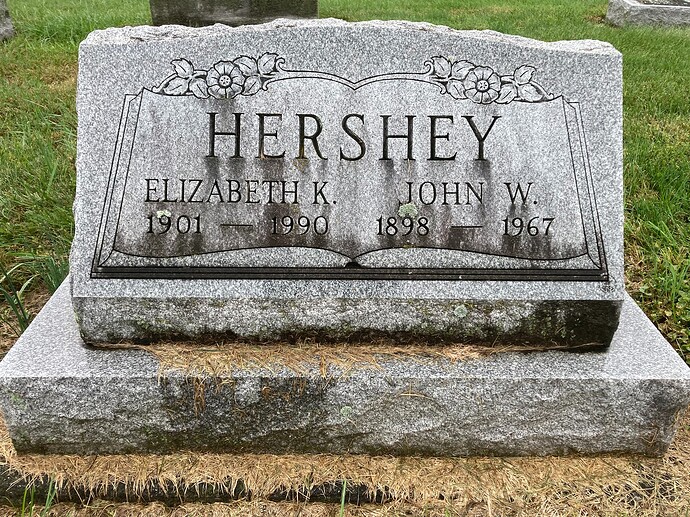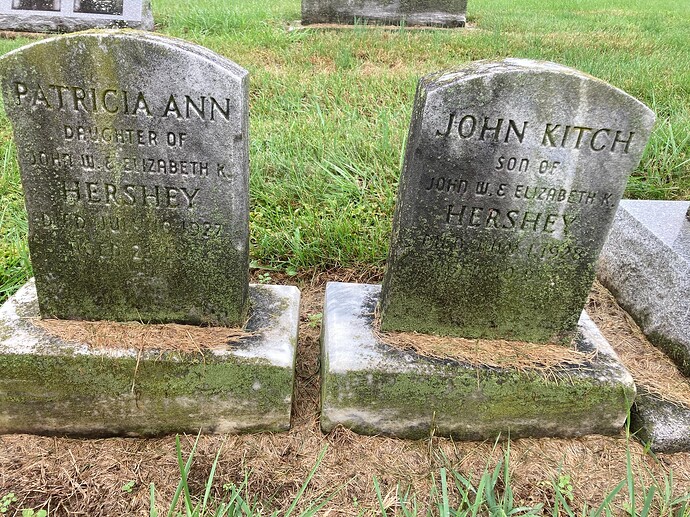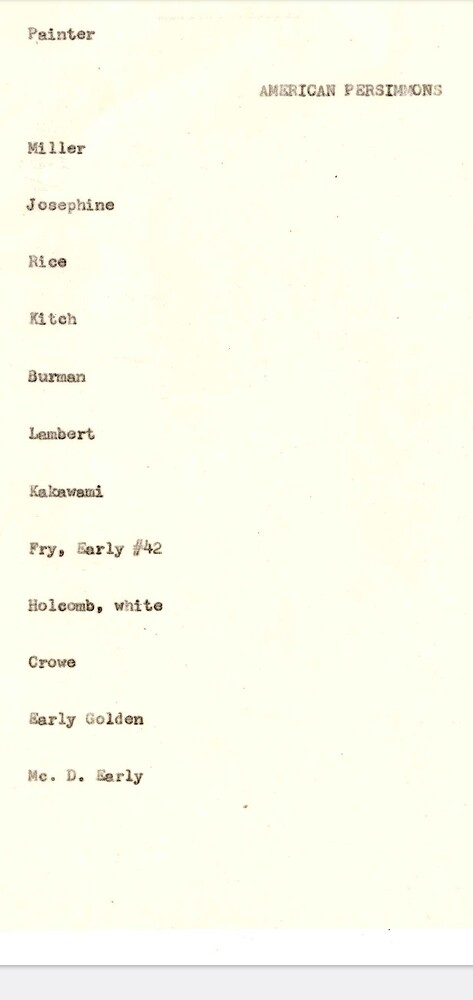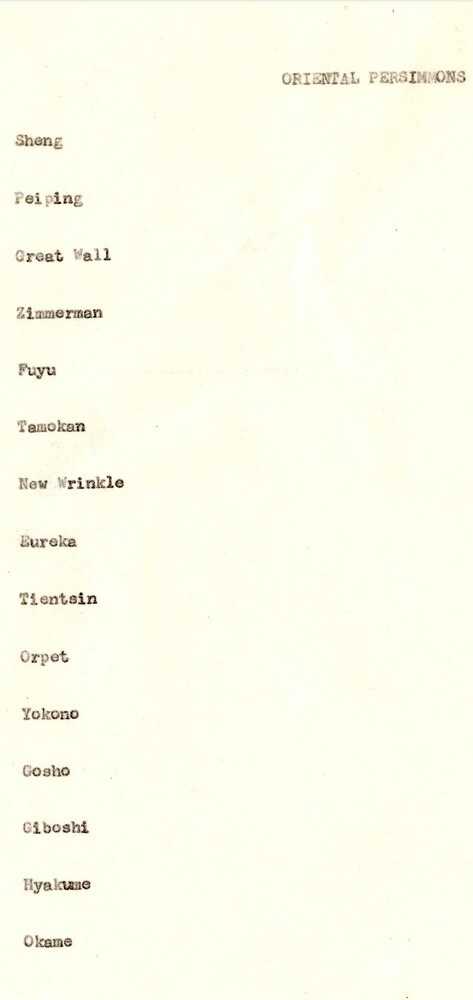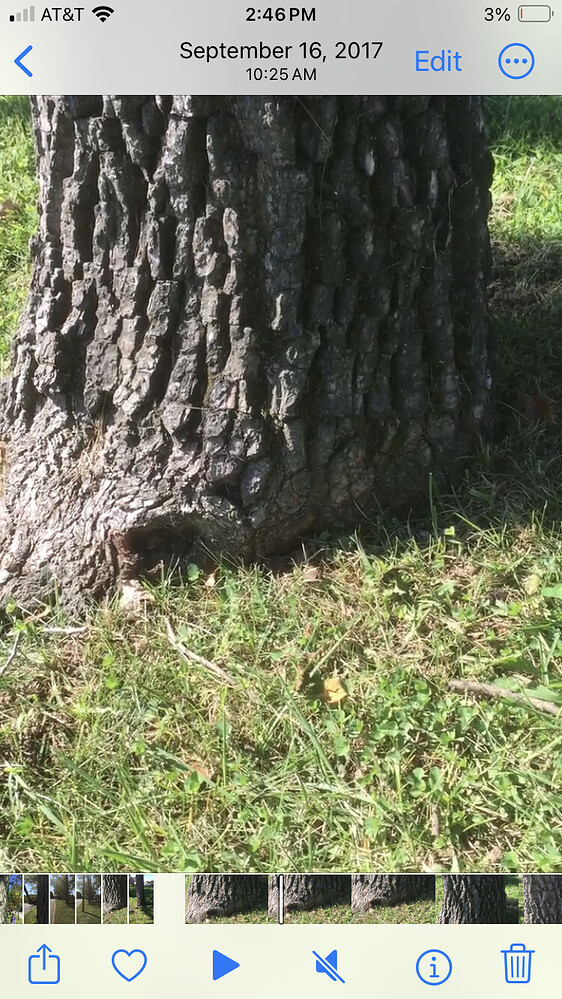Kitch was Hersheys wife Elizabeth’s maiden name, and the middle name of their son who died at only a few months old, John Kitch.
Etter’s old nursery row with the 9 trees is another mystery to me. They all appear as seedlings, some with multiple trunks. Yet they are all good quakity fruitng females. It’s possible he thinned out all the inferior and male trees before his passing and they are all seedlings. It’s also possible it’s a mix of grafted cultivars and chance stump sprouts. The row i’m referencing as 1-9 is along the fence line of his property where the persimmons habe a lot of competition from other grown-up nursery row trees including hickories and oaks. Their diameters are generally quite small, 6 inches or less.
However, there is another area with bigger, taller, obviously grafted persimmons growing without competition.
I’d love to see or read references for fruits such as you mention, and Glidewell and Zimmerman. Happy to receive and read through whatever you have to send.
In the 1980 interview Greg Williams and Brian Caldwell recorded with Elizabeth Hershey she says Kitch is named after her brother / John Henry’s dad, who would help them out in the nursery.
Dale’s Favorite comes from a seedling tree growing out of an old nursery row. Buzz Favorite is probably an older unknown cultivar as it is in a grove of grafted persimmons alongside Josephine, Kitch, and Buhrman. I don’t know which tree “Hershey’s Oldest” comes from but Buzzy does.
Hershey Oldest is the name i put on the large persimmon graft growing at St John Vianney , it’s close to the MacAlister graft off the path coming by the patio. We should give it a better tag.
I dont have a copy of that one anymore, we should get it grafted, its a very good one
I dont know what year he started planting out the estate that became St John Vianney , but have often wondered if it didnt start out as a planting by JF Jones and was the way Hershey was introduced/connected to Downingtown? I used to know the name and history of the industrialist who built that estate….
I would live to read/hear this interview
I’ve got 50 mins transcribed and 20 mins to go then I’ll throw it up on substack with notes. Boy is it a bear to hand transcribe!
Its like the trees in the MacKenzie grove
Did John H wait to move them there until after they flowered ?
It was the J. Gibson McIlvain estate. McIlvaine was a wealthy Philadelphia based lumberman who went into the newspaper industry too i believe. I guess one his his sons/grandsons was running the business by Hershey’s time in the early 1900s and he was one of Hershey’s early clients. McIlvain was Scotch-Irish but became Quaker in the 1700s. It’s an interesting connection. J F Jones wasn’t Quaker, he seems to have been baptist. But maybe he was Quaker too? Jones sister was a Quaker preacher and her and her Quaker husband were early pioneers who established the single-tax Quaker community of Fairhope, Alabama. J Russell Smith, was of course a Quaker too.
So Hershey grows up as a Lancaster county Mennonite farm boy, works as a mechanic of some sort, is working for the railroad in 1921, but establishes his own nursery with tens of thousands of trees by 1926 in Downingtown right next to McIlvain estate.
Wasn’t he living in the Meetinghouse for a time? Who told us that – the Brown’s?
I have not found a paper trail which tells how he went from Mennonite to Quaker and got in with Jones. A reasonable guess is Hershey applied to help Jones with labor in his early 20s, as Jones’ nursery wasn’t far from Hershey’s home. John Hershey’s eyes are opened, in terms of agriculture but also in terms of religion as he becomes a Quaker either through the influence of Jones colleague Smith, or Jones himself. Then using Quaker connections Hershey gets established in Downingtown…
I agree that “Hershey’s Oldest” might be the same as McKenzie Corner, which could be Early Golden. Still dont know who Downingtown Center is though.
Are you familiar with the AI reading apps like NaturalReader? Some may be able to take photos or PDF and make documents for you as well as reading them.
Welcome to the forum and thank you for sharing your knowledge about this history.
I have never used NaturalReader but know that there are voice to text AI transcribers. However, the origina recording is from an old casette tape and it is digitized but still full of a lot of relicts and barely audible or intelligible bits, so i decided to do it by hand so as to be able to make human decisions about what is being said and use my contextual knowledge to fill in the gaps. That said, maybe it would have saved me time to run it through AI first and then hand correct. Oh well!
I think you are right about the smaller trees from Etter orchard. However I read that he sourced some cultivars from G.A. Zimmerman (he likly mentioned his whole collection in that report wroted to NNGA). I’m sure F.Etter get from him at least Miller, Early Golden, Josephine, Golden Gem and Glidewell (seedling of Little’s Ruby).
Here’s Fayette’s list of American and Oriental persimmons from a letter he wrote to J. Russell Smith housed at the APA. I’m not sure this made it into the NNGA or not. I don’t see Glidewell or Golden Gem on the list.
I gone back to my combined notes. Glidewell and Golden Gem were mentioned by G.A.Zimmerman, I accidentaly mixed them into Etter’s collection.
Honestly, I have never heard about Fry, Holcomb, Crowe and Mc. Daniel Early… Kawakawami from the other hand is a seedling of Josephine rised by Munson in Texas.
I was just reading some literature which says Early Golden, Garretson, and Killen tend to fall with the calyx on the fruit. The Downingtown Center tree tends to fall free of the calyx. And the fruits are still firm after falling 40 feet to the ground (it is a tall tree). I’m beginning to wonder if it could be an EG seedling and not a known cultivar after all. I know for a fact the other two persimmons on either side are seedlings (one female, pretty good; the other male), and i can’t recall a clear graft line on Downingtown Center. Maybe Buzz remembers better than me. Since the fruit is so good and the tree is so loaded I’ve never considered before that it could be a seedling. I will have to go visit the tree again and report back.
Downingtown Middle (center) is clearly grafted,
